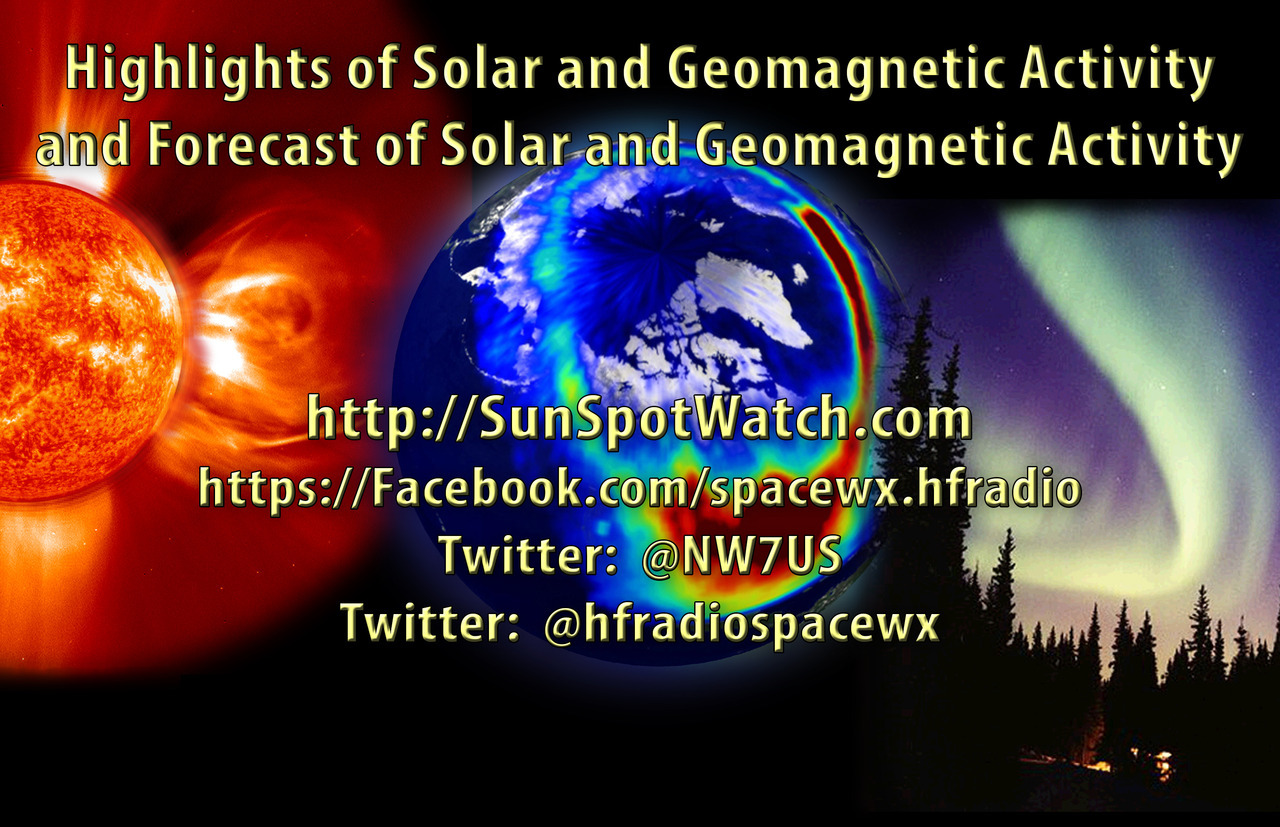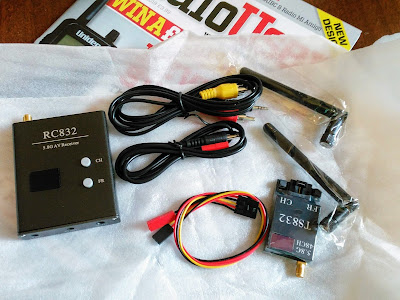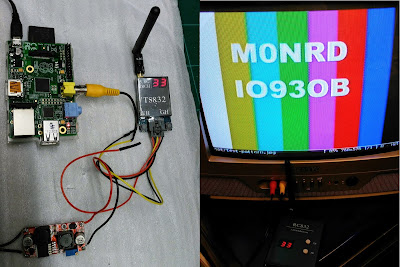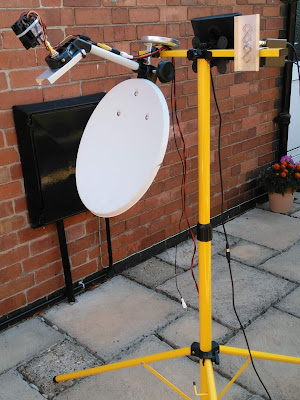 K5A Special Event Station
K5A Special Event Station

On Saturday, August 11, 2018, the Bella Vista Radio Club will be operating a special event station at the Shiloh Museum of Ozark History in Springdale Arkansas. This is to celebrate the 50th year anniversary of the museum. We will be operating on the museum grounds from the General Store. Listen for us on the air starting Aug 11, at 1300Z. Operations will conclude at 2300Z. Two stations, one SSB and the other CW, will be operating on or near 14.250, 14.035, 7.250 and 7.035.
I will be participating part of the day, likely on the SSB station. I may spend some time trying to listen to CW to see if I can decode it yet! Gotta work on that!
For more information see the following links:
ARRL Link
Bella Vista Radio Club Link
Looking forward to having a QSO with you on Saturday!
Wayne Patton, K5UNX, is a regular contributor to AmateurRadio.com and writes from Arkansas, USA. Contact him at k5unx@arrl.net.
 The Spectrum Monitor — August, 2018
The Spectrum Monitor — August, 2018
 Stories you’ll find in our August, 2018 issue:
Stories you’ll find in our August, 2018 issue:
SHARES: The Federal Government’s Plan-B HF Communications System
By Steve Handler
In the aftermath of the 1962 Cuban Missile Crises, President John F. Kennedy wanted to improve the communications systems that linked the federal agencies. The goal was to provide better interconnectivity and also survivability of the system in the event of war or natural disasters. The result was the National Communications System (NCS). On September 20, 1988, NCS created the SHAred RESources (SHARES) High Frequency (HF) Radio program. This program was tasked with backing up the landline, and later cellular, telephone systems. Current SHARES participants include the Departments of Agriculture, Defense, Energy, Health, and Human Services, Homeland Security, Interior, Justice, Transportation, and Veterans Affairs. Other governmental entities include the Federal Communications Commission, General Services Administration, NASA, and the Environmental Protection Agency. Non-governmental organizations include entities such as the American Red Cross. Critical telecommunications infrastructure companies such as AT&T and Verizon also participate in SHARES. Steve explains how it all works.
APRS and other Digital Communications: Part 1
By Cory GB Sickles WA3UVV
While many hams may think of APRS as a mode that has little more to offer than beaconing and radiolocation functions, it is a figurative Swiss Army Knife of utilities that can be of use in contacting other hams while traveling, exchanging quick text messages, satellite communications, email, public service, and many other activities. From the mechanical age of RTTY, with its clacking printers chewing through rolls of paper to the peculiar digital whine of FT8, amateur radio has always been at the forefront of wireless digital communications. Cory explores the various facets of APRS and other non-verbal digital communications in Part 1 by looking first at the history of digital communications starting with the original binary code: CW.
Not the Sounds of Silence: Exploring the ELF and VLF Bands
By Georg Wiesalla
The many (man-made) signals and (nature) sounds in the low frequency regions can travel for thousands of kilometers all around the globe and inside the Earth-Ionosphere waveguide. Therefore, ELF and VLF emissions have been, and are still being studied for a very wide range of military and scientific purposes. They can be found in many areas of science and public life, even in some leisure pursuits including aviation, amateur radio, detection of nuclear explosions, ELF and VLF-range emissions by meteorites, geological mapping, ionospheric research, military communications, radio astronomy, seismic research and under-sea exploration and oceanography. Georg takes us on a journey into radio depths.
Buying New and Used Radio Gear
By Robert Gulley AK3Q
Buying new or used radio equipment can be a daunting task for the experienced radio enthusiast, but even more so for folks new to the hobby. As an avid radio enthusiast and amateur radio operator, Robert has owned many different types of radios and associated radio equipment. From AM/FM broadcast radios to scanners, shortwave radios to amateur gear, and very old radios, to some of the latest SDR equipment, he has purchased gear from many different sources. He has been very fortunate (and yes even lucky) in that very few purchases have been made from less-than-honest people. The few, which were bad experiences, certainly taught him some valuable lessons.
Scanning America
By Dan Veeneman
Lenoir County (NC); Missouri Dept. of Conservation
Federal Wavelengths
By Chris Parris
Nevada Scanner Safari 2018
Milcom
By Larry Van Horn N5FPW
Military UHF Traffic Control Frequencies
Utility Planet
By Hugh Stegman
The Silent Summer: US Gets Quieter
Shortwave Utility Logs
By Hugh Stegman and Mike Chace-Ortiz
VHF and Above
By Joe Lynch N6CL
It’s All About Propagation
Digitally Speaking
By Cory GB Sickles WA3UVV
DV33
Amateur Radio Insights
By Kirk Kleinschmidt NT0Z
Portable Generators: Test and Enjoy!
Radio 101
Ken Reitz KS4ZR
Monitoring HF Marine Radio During the Tropical Storm Season
Radio Propagation
By Tomas Hood NW7US
Solar Wind and Coronal Mass Ejections
The World of Shortwave Listening
By Rob Wagner VK3BVW
FT8, WSPR and the Shortwave Listener
The Shortwave Listener
By Fred Waterer
Health on SW; Canada as DX; BBC Offerings
Amateur Radio Astronomy
By Stan Nelson KB5VL
Cosmic Podcasts; Books, Charts and the National Radio Quiet Zone
The Longwave Zone
By Kevin O’Hern Carey WB2QMY
SDR: You can do it!
Adventures in Radio Restoration
By Rich Post KB8TAD
The Rescue: Drake SPR4 Communications Receiver
Antenna Connections
By Dan Farber AC0LW
Collinear Array: Multiple Elements in a Single Piece
The Spectrum Monitor is available in PDF format which can be read on any desktop, laptop, iPad®, Kindle® Fire, or other device capable of opening a PDF file. Annual subscription is $24. Individual monthly issues are available for $3 each.
Ken Reitz, KS4ZR, is publisher and managing editor of The Spectrum Monitor. Contact him at editor@thespectrummonitor.com.
 Colorado 14er Event: Mount Princeton (W0C/SR-005)
Colorado 14er Event: Mount Princeton (W0C/SR-005)

For the Colorado 14er Event, Joyce/K0JJW and I decided to activate Mount Princeton (W0C/SR-005). I had climbed this summit many years ago, well before Summits On The Air (SOTA) was a thing. Princeton is a majestic peak that towers over Buena Vista and the surrounding area. We see that mountain quite often when we are up at the cabin, so I kept thinking it would be great to activate it for SOTA. Despite it being a popular 14er, it had only been
activated 2 times before (now 4 times with Joyce and me).

For complete information on climbing this summit, spend some time studying the 14ers.com web site. You will see references to the Upper Trailhead and the Lower Trailhead. A 4WD road leads to the upper trailhead which is where we started our hike at 11,800 feet. The Lower (or Main) Trailhead is way down at the bottom (8900 feet) which makes for a much longer hike. Also, you end up hiking on the road, which tends to be boring.
The Road
The 4WD road is mostly “easy 4WD” with some challenging spots inserted along the way. It was no problem to drive the road with our Jeep Wrangler. A crossover-style SUV would have trouble in spots but can probably make it with very careful wheel placement. We parked very close to the upper trailhead, just pulling off to the side of the road, but there is not much room there. There is a lot more parking near the communications towers shown on the map but you have to hike another mile or so on the road. We made sure we had a parking spot by arriving at the upper trailhead at 5:30 AM; we were the first ones there.

The trail starts out very distinct and is easy to follow. Later, the terrain turns to talus (fields of large rocks) which continues for the entire climb. In some spots, the trail fades and is difficult to follow. Even when you are “on the trail” you get to do a lot of rock hopping. There is a reason they call these the Rocky Mountains. By my GPS app, the distance was 2.1 miles (one way) with 2360 vertical feet.
Summits On The Air
For radio operating, we focused on 2m FM using the Yaesu FT-90 Transceiver with LiPo battery, putting out 30W into a 3-element Arrow yagi antenna. I did have my very first DMR SOTA contact with Terry/KE0HNW, using my Tytera MD-380 handheld on 70 cm. I also made a few calls on 446.0 MHz but never got a reply.

Here’s my log…Joyce’s is about the same but with fewer QSOs.
UTC Band Mode Callsign 15:38 144MHz FM KD0VHD mobile 15:40 144MHz FM KS0E Jefferson 15:42 144MHz FM KI6YMZ Maroon Peak (W0C/WE-002) 15:46 144MHz FM N0MTN Mt Sherman (W0C/SR-061) 15:47 144MHz FM K0ETT Huron Peak (W0C/SR-010) 15:48 144MHz FM WA6MM Mt Bierstadt (W0C/PR-015) 15:49 144MHz FM KN0MAP 15:50 144MHz FM KD0YOB on his way up Mt Flora 15:53 144MHz FM KE0HNW 15:54 144MHz FM KE0RMY 15:55 433MHz DV KE0HNW My first SOTA DMR contact 15:57 144MHz FM W0AJO 16:17 144MHz FM K0BLL Mount Belford (W0C/SR-006) 16:30 144MHz FM W0ASB Mount Antero (W0C/SR-003)

We worked six other mountaintop stations, all of them 14ers. I also worked a few more summits on our way down the mountain but we were outside the activation zone, so I submitted those as a chaser log.
Thanks to everyone that came out to play!
73 Bob K0NR
The post Colorado 14er Event: Mount Princeton (W0C/SR-005) appeared first on The KØNR Radio Site.
Bob Witte, KØNR, is a regular contributor to AmateurRadio.com and writes from Colorado, USA. Contact him at bob@k0nr.com.
 Weekly Propagation Summary – 2018 Aug 06 16:10 UTC
Weekly Propagation Summary – 2018 Aug 06 16:10 UTC
Here is this week’s space weather and geophysical report, issued 2018 Aug 06 0236 UTC.
Highlights of Solar and Geomagnetic Activity 30 July – 05 August 2018
Solar activity was very low throughout the period. Region 2717 (S08, L=027, class/area=Axx/10 on 02 Aug) was briefly the sole active region with sunspots, but was largely unproductive. No Earth-directed CMEs were observed this period.
No proton events were observed at geosynchronous orbit.
The greater than 2 MeV electron flux at geosynchronous orbit reached high levels on 30 Jul, moderate levels on 31 Jul, and 01, 03-04 Aug. Normal levels were observed throughout the rest of the period.
Geomagnetic field activity was quiet to unsettled on 31 Jul, and 01-03 Aug, with quiet conditions observed throughout the remainder of the period, under a nominal solar wind environment.
Forecast of Solar and Geomagnetic Activity 06 August – 01 September 2018
Solar activity is expected to be very low throughout the outlook period.
No proton events are expected at geosynchronous orbit.
The greater than 2 MeV electron flux at geosynchronous orbit is expected to reach high levels on 21-26 Aug. Moderate levels are expected on 06-11, 18-20, 27-31 Aug and 01 Sep. Normal levels are expected throughout the remainder of the outlook period.
Geomagnetic field activity is likely to reach G1 (Minor) geomagnetic storm levels on 20 Aug due to the influence of a negative polarity, coronal hole high-speed stream. Active conditions are expected on 07-08, 17, and 20-21 Aug due to multiple, recurrent coronal hole high-speed streams. Quiet to unsettled conditions are expected throughout the remainder of the outlook period.
Don’t forget to visit our live space weather and radio propagation web site, at: http://SunSpotWatch.com/
Live Aurora mapping is at http://aurora.sunspotwatch.com/
If you are on Twitter, please follow these two users: 1. https://Twitter.com/NW7US 2. https://Twitter.com/hfradiospacewx
– – – – – – – – – – – – –
Be sure to subscribe to our space weather and propagation email group, on Groups.io
https://groups.io/g/propagation-and-space-weather
Spread the word!
– – – – – – – – – – – – –
Links of interest:
+ Amazon space weather books: http://g.nw7us.us/fbssw-aSWSC
+ https://Twitter.com/NW7US
+ https://Twitter.com/hfradiospacewx
Space Weather and Ham Radio YouTube Channel News:
I am working on launching a YouTube channel overhaul, that includes series of videos about space weather, radio signal propagation, and more.
Additionally, I am working on improving the educational efforts via the email, Facebook, YouTube, Tumblr, and other activities.
You can help!
Please consider becoming a Patron of these space weather and radio communications services, beginning with the YouTube channel:
https://www.patreon.com/NW7US
The YouTube channel:
https://YouTube.com/NW7US
..
Visit, subscribe: NW7US Radio Communications and Propagation YouTube Channel
 Moving Pictures! First dabbles in Amateur TV
Moving Pictures! First dabbles in Amateur TV
They say "a picture paints a thousand words"and I've always liked the idea of sending pictures via radio having dabbled with sending and receiving SSTV and SSDV, including pictures from High Altitude Balloons (HABs) like the Hamfest HAB flight I did back in 2015
But I've also been intrigued by "Fast scan TV" to transmit moving images. I've seen demonstrations at conferences and in online videos and joined the British Amateur Television Club BATC a few years ago but apart from reading the CQ-TV magazine I had not done anything mainly due to expense and investment I mistakenly thought I would need to make.
Recently I have seen mention of using easy and low cost equipment to get on the air on 5.6GHz (the 6 cm amateur band) using cheap modules intended to transmit “First Person Video” (FPV) back from drones.
These simple units can be used without any modifications to get on air. A number of operators have used them with high gain WiFi panel and/or dish antennas with a clear line of sight path to send pictures to stations using the same equipment over paths in excess of 50km, the current record is over 160km. Chris Leviston M0KPW has an excellent website describing his 5.6GHz system http://www.5-6ghz-atv.co.uk/ and there is more information at the BATC Wiki https://wiki.batc.org.uk/5.6_GHz
Inspired I ordered some kit from eBay a few weeks back, a receiver module and transmitter arrived quite quickly (no slow boat from China this time)
The equipment is powered by a 12V supply and input and output is a composite video signal and audio. It can be fed by a standard camera or video source but I dug out an old Raspberry Pi and soon had it generating and transmitting a test card with the required call sign overlay. The modules are channelised, the displayed 33 number is bank 3, channel 3 which is 5.665GHz selected by the BATC since it sits inside the amateur allocation,
Over the week I refined the Pi software, adding the Pi camera and various libraries in python to generate video with informational overlay, adding a GPS allowed calculation of the locator square when out portable. I have put it in a box (sorry no picture of that) and a switch to flip between live video and test card. I also had a bash at making some double biquad antennas. Regularly updating my twitter feed with various milestones (I recommend you follow me)
Pi sending live video via 5.6GHz with text overlay using pi camera and raspivid easy peasy.. pic.twitter.com/Fthfpbw0r0— Andrew Garratt M0NRD (@nerdsville) July 28, 2018
While browsing the BATC website for information I spotted that there was an ATV Academy workshop being organised by the Telford and District ARS, giving people the opportunity of finding out a bit more about ATV and people could bring along their equipment and projects for advice. So at the last minute I decided to go but because of the distance could only really go on the Saturday. But it was well worth it and a great day. I was made to feel welcome by everyone there and was able to show off my modest achievements on 5.6GHz and learned about the BATC Portsdown Transceiver and MiniTioune receiver projects, even buying the parts to build the receiver.Lol, wife looking suitably impressed by the Pi based image generator which flips between live feed and test card using switch pic.twitter.com/M6qnif5V0P— Andrew Garratt M0NRD (@nerdsville) August 3, 2018
The academy coincided with a BATC Activity weekend and they were going up to the summit of the nearby Long Mynd to operate on the Sunday. Since I wasn't there I had planned to go to a local high point to see if I could make contact with some of the other operators and stations and got the kit ready on a cheap lighting tripod. I was going to use an old portable satellite dish with one of my double biquads at the feed point.Having a great time learning all about ATV today, showing off my humble efforts pic.twitter.com/YTwEf7Sjdl— Andrew Garratt M0NRD (@nerdsville) August 4, 2018
The satellite dish is inverted because they are offset so when the dish is vertical they are actually pointing around 20 degrees upward towards the TV satellite (in the UK). So for terrestrial use with low elevation they work better inverted. (see here for better description of offset dishes)
I did venture out but I chickened out setting up due to a combination of a surprisingly busy road, fly tipping and very hot conditions. Due to the the fly tipping in the lay-by I didn't want to be seen getting stuff out of car boot! especially as a few cars had slowed down as they passed.
Nevermind I have ordered couple of cheap high-gain mesh dish antennas so when they arrive I will get out again and arrange some skeds, hopefully roping in some of the radio club.
In addition to the 5.6GHz stuff I have also taken possession of an ADALM-PLUTO SDR from Analog Devices. It is inexpensive (£90/$100) and designed to allow educational experimenting in software defined radio. It is a SDR receiver and low-power transmitter. They had been in short supply but availability has improved.
Charles Brain G4GUO has added support for the device into the DATV Express software. I am hoping to use it for some experiments in RB-TV (Reduced bandwidth TV) so I can actually use my NoVs
I took the PLUTO along to the ATV workshop and was able to see it transmitting and being received by other peoples receivers. So last night I got out the two satellite receivers I have and with a little bit of persuasion with settings got some DVB-S DATV transmitted and received.
Anyway, that is enough for now.. but will try to keep the blog updated as I experiment some more, but follow my twitter account @nerdsville for realtime updates 73 AndrewBit of "shaky cam" but shows the ADALM-PLUTO transmitting across the shack using #DATVExpress being received by an old FTA satellite box. pic.twitter.com/souCJA9qBK— Andrew Garratt M0NRD (@nerdsville) August 5, 2018
Andrew Garratt, MØNRD, is a regular contributor to AmateurRadio.com and writes from East Midlands, England. Contact him at nerdsville@gmail.com.
 ICQ Podcast Episode 273 – Austrian Innovation
ICQ Podcast Episode 273 – Austrian Innovation
In this episode, Martin M1MRB is joined by Chris Howard M0TCH, Dan Romanchik KB6NU, Ed Durrant DD5LP and Frank Howell K4FMH to discuss the latest Amateur / Ham Radio news. Colin M6BOY rounds up the news in brief, and this episode’s feature is Austrian Innovation and US Book Review.
- RSGB Releasing New Amateur Radio Exam Syllabus
- Thailand 3rd Largest Ham Radio Nation
- RSGB Retires AROS and Implements OAS
- ARRL Board Adopts Volunteer Monitoring Program
- DAB Radio in Norway is a Tragedy!
- Parity Act Options Open Despite Removal from Defense
- Authorization Act Conference Report
- Spiders and Space Weather
- Sample Belgian Online Ham Radio Exams
- Online NASA Toolkit for Satellite Data
Colin Butler, M6BOY, is the host of the ICQ Podcast, a weekly radio show about Amateur Radio. Contact him at info@icqpodcast.com.
 Amateur Radio Weekly – Issue 213
Amateur Radio Weekly – Issue 213

ISS packet radio system back late this year
The currently silent packet radio system on the International Space Station could be back on the air by year’s end.
ARRL
Tutorial: Plot and decode weather balloon data
A radiosonde is a small weather sensor package that is typically attached to a weather balloon. As it rises into the atmosphere it measures parameters such as temperature, humidity, pressure, GPS location etc, and transmits this data back down to a receiver base station using a radio signal.
RTL-SDR.com
Edwin Armstrong’s Battle for FM Radio
It is a story of innovation, but also a story of personal vanity, corporate greed, stubbornness, marital problems, and even suicide. The only thing missing is a long-lost identical twin sibling to turn it into a full telenovela.
Hack A Day
Locating Sources Of Noise
As our lives become filled with technology, the likelihood of electronic interference increases. Every lamp dimmer, garage-door opener or other new technical “toy” contributes to the electrical noise around us.
Surrey Amateur Radio Club
Digital nets on 11m
Digital modes (ROS, FT8, SSTV, PSK31) are emerging on 11 meters.
Delta Alfa
Milliwatt DX on 868 MHz
Packets transmitted by the gateway of Ryan Walmsley, member of The Things Network East Coast, Great Yarmouth, was received 235 km away in Utrecht, Netherlands.
Southgate
Q&A: Summer of Tariffs
Will a 25 percent tariff be material on a single switch purchase costing a few dollars? Of course not. But this helps illustrate that once you start entering into the hundreds and thousands of dollars, these tariffs begin having an impact.
SparkFun
Ruth Willet is 2018 Hiram Percy Maxim Memorial Award recipient
The Hiram Percy Maxim Memorial Award is given annually by the board to a radio amateur under the age of 21 whose accomplishments and contributions to both Amateur Radio and the local community are of an exemplary nature.
ARRL
Video
QRP vs 20 Watts – What is the Practical Difference?
Running one hour in a contest at 5 watts, and the next hour at 20 watts.
Outdoors On The Air
Flight of the Bumblebees 2018
This is a popular QRP CW amateur radio event. The Bumblebees are portable stations.
N4KGL
Compact Homebrew End Fed QRP Antenna
I built this antenna specifically for low wattage QRP use to be compact and inexpensive. It utilizes a 9:1 unun wrapped on a T106-2 toroid and minimal hardware to be lightweight.
WI9LL
Get Amateur Radio Weekly in your inbox.
Sign-up here
Amateur Radio Weekly is curated by Cale Mooth K4HCK. Sign up free to receive ham radio's most relevant news, projects, technology and events by e-mail each week at http://www.hamweekly.com.



















